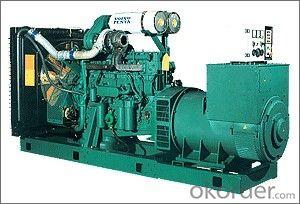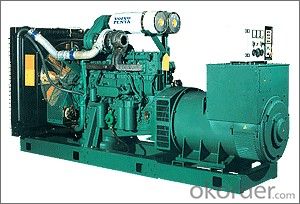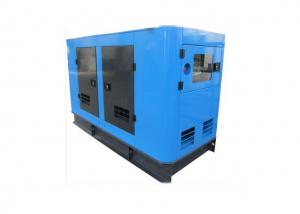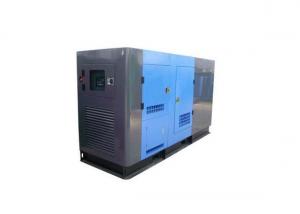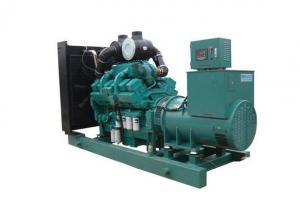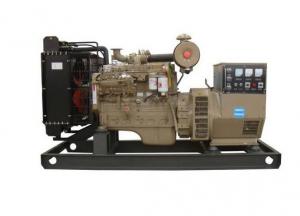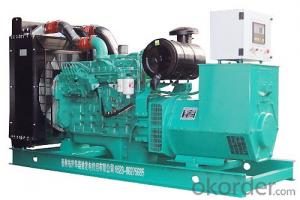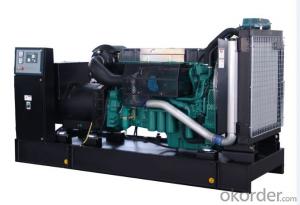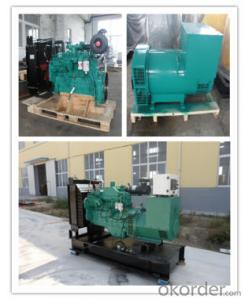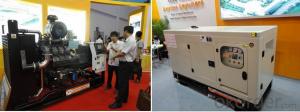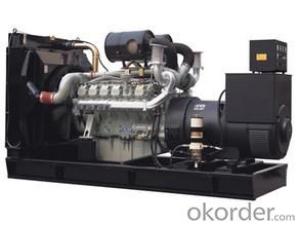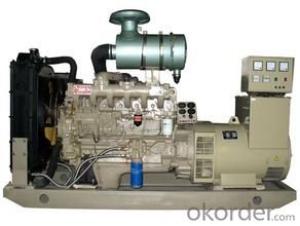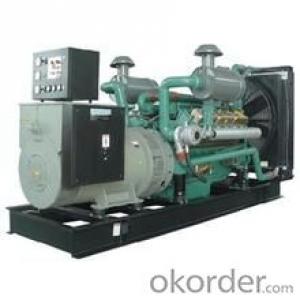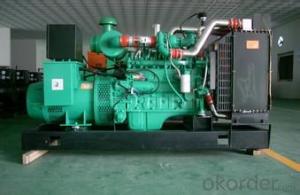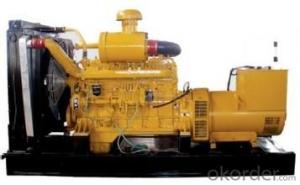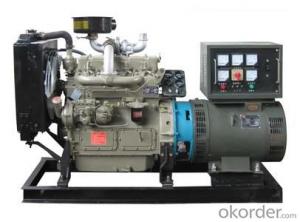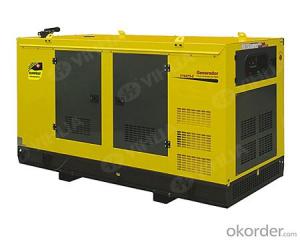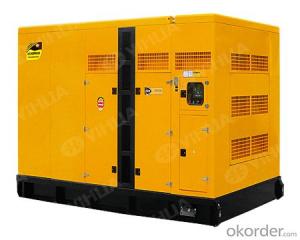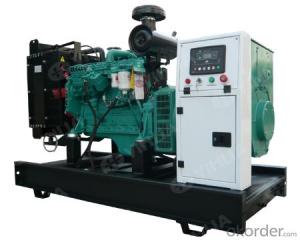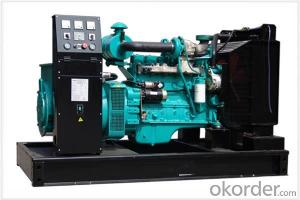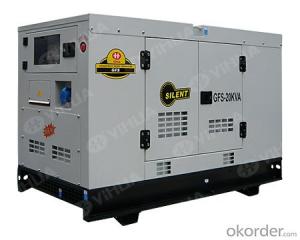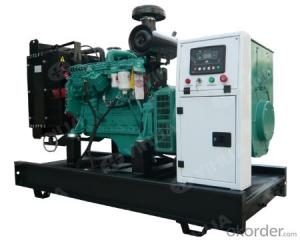Cummins Diesel Generator 500KW/625KVA C32
- Loading Port:
- Shanghai
- Payment Terms:
- TT OR LC
- Min Order Qty:
- 1 unit
- Supply Capability:
- 300 unit/month
OKorder Service Pledge
Quality Product, Order Online Tracking, Timely Delivery
OKorder Financial Service
Credit Rating, Credit Services, Credit Purchasing
You Might Also Like
| ENGINE DATA | |||||||
| Manufacturer: | Chongqing Cummins Engine | ||||||
| Model: | Original Cummins KTAA19-G6A, 4-cycle | ||||||
| Air Intake System: | Turbo, Water / Air Cooling | ||||||
| Fuel System: | Fuel Pump, EFC | ||||||
| Cylinder Arrangement: | 6 in line | ||||||
| Displacement: | 18.9L | ||||||
| Bore and Stroke: | 159X159(mm) | ||||||
| Compression Ratio: | 13:1 | ||||||
| Max. Standby Power at Rated RPM: | 610KW/830HP | ||||||
| Governor Type: | Electronic | ||||||
| Exhaust System | |||||||
| Exhaust Gas Flow: | 2054L/s | ||||||
| Exhaust Temperature: | 584℃ | ||||||
| Max Back Pressure: | 10kPa | ||||||
| Air Intake System | |||||||
| Max Intake Restriction: | 6.23kPa | ||||||
| Burning Capacity: | 750L/s | ||||||
| Fuel System | |||||||
| 100%(Prime Power) Load Consumption: | 206 g/Kw.h | ||||||
| 75%(Prime Power) Load Consumption: | 205 g/Kw.h | ||||||
| 50%(Prime Power) Load Consumption: | 206 g/Kw.h | ||||||
| Oil System | |||||||
| Total Oil Capacity: | 50L | ||||||
| Oil Pressure at Rated RPM: | 345-483kPa | ||||||
| Cooling System | |||||||
| Total Coolant Capacity: | 116.5L | ||||||
| Thermostat: | 82-93℃ | ||||||
| Max Water Temperature: | 104℃ | ||||||
| ALTERNATOR DATA | |||||||
| Manufacturer: | Original STAMFORD ,Marathon,MECC,Kaijieli | ||||||
| Frequency and Speed: | 50Hz/1500rpm | ||||||
| Altitude: | ≤1000m | ||||||
| Connecting Type: | 3 Phase and 4 Wires, “Y” Type Connecting | ||||||
| Power Factor: | 0.8 | ||||||
| Protection Grade: | IP23 | ||||||
| Exciter Type: | Brushless, Self-Exciting, with AVR | ||||||
| Insulation Class, Temperature Rise: | H/H | ||||||
| GENERATING SET DATA | |||||||
| Voltage Regulation, Stead State: | ≤±1% | ||||||
| Volts Warp(Sudden Reduce): | ≤+25% | ||||||
| Volts Warp(Sudden Increase): | ≤-20% | ||||||
| Frequency Regulation, Stead State: | ≤5% | ||||||
| Frequency Warp(Sudden Reduce): | ≤+12% | ||||||
| Frequency Warp(Sudden Increase): | ≤-10% | ||||||
| Frequency Recovery Time: | ≤5S | ||||||
| Open Type Size: | 3700(mm)X1570(mm)X2080(mm) | ||||||
| Open Type Weight: | 4820kg | ||||||
| Control System: | Original Uk deep sea auto controller | ||||||
| Standards: | ISO9001, ISO14001, European CE | ||||||
- Q: I have a 1992 Toyota Tercel that sits in my yard. It ran at one time, but has been driven so little that it now no longer starts. Had this problem one time before and paid someone to fix it. They replace the fuel pump to get it started again. Other issues are lost title, back left tire seems locked, and busted windshield.I hate to just trash this car and wonder how difficult would it be to turn the motor into a backup power generator for my house? Is it feasible? One of our sister companies at work has a diesel engine that acts as a backup power for their computer room, so I wondered if I could possible do the same for my home.Any suggestions?
- as Mark said anything is doable in exchange of some work! if it is economical, the answer is no as for the speed control you need a cruise control modify-it to keep the frequency constant as an example a Chevy truck 350 in? is 200HP as a vehicle and 40 HP as a stationary engine! there are lots to modify such as cooling, lubrication to be compatible with new venture from an academic point of view it is worthwhile because you will learn a lot about engineering, and this is priceless information good luck Di
- Q: I am currently a diesel mechanic in the Army. I know a lot about bothe gas and Diesel engines in cars trucks and generators. My contract is almost up and I m trying to transition back into the civilian world. I was just wondering if someone could help me out with any major differences between a 6.7 liter Diesel engine and the Diesel engines in heavy diesel trucks
- nothing really, 6.7 is smaller and wouldnt get the job done hauling 40 tons. also a few less parts not needed for a light duty truck
- Q: i have 350kw old diesel generator and want to calculate the exact consumtionption at various loads.
- If okorder
- Q: I just purchased a miller big blue 400D diesel dc welder generator . I will be using 7018 rods. There are two controls on this unit, amps and volts, for best welding results, what is the best setting? I understand that metal thickness will change this this, but I' ll be starting on 1/4 plate. Any help will be appreciated.
- practice!
- Q: Hello, what I'm really trying to understand is how do large generators that power prisons, hospitals and various government buildings work? I have a basic understanding of regular house generators and their working process. What I want to know is how such a generator can acquire power in a case of a complete electric blackout, is there a back up supply line? another power source? Surely to supply a large building such as a prison or a hospital one would need a large reserve of power. So the question is where does that power come from? Or are they completely autonomous? Also are these generators commonly used nowadays and what is the difference between them and the reserve power system if any. I would greatly appreciate any answers that could explain the above. Thanks.
- You are asking about backup generators? They have a gasoline or diesel engine driving the generator.
- Q: I know about solar panels and wind turbines but either will have to be above ground. Petrol or diesel generators are to loud and fuel isn't cheap these days.
- Nuclear reactor power plant. Stationary exercycles. Water wheel in underground river. Steam boiler fired by coal or natural gas. Fuel cell.
- Q: I have a diesel truck as well as a 25,000 watt diesel standby generator for my home. I'm curious if they will be affected should a solar flare zap us. I'm not too well versed in the whole solar storm issue.
- Most solar storms don't affect us but occasionally intense electromagnetic disturbances can knock out communications or possibly even overload power grids. I wouldn't worry too much about your diesel truck. Not too sure about your generator but it's highly unlikely to be affected.
- Q: Fuel tank is for generator and its a day tank the size of the tank filling line is 2
- So you can empty the tank. If the tube ends near the top, the generator will only be able to pull fuel until the level drops below the bottom of the inlet pipe.
- Q: I work at a high rise building as security and was interested to know why smoke would come out of a generator? What would be the main reason? Engine too hot? A snapped wire?
- What kind of generator and how is it fueled? A diesel generator will smoke at start-up, and if it is an older unit burning old fuel, it will smoke in operation as well. That would be smoke from the exhaust. If you are writing about smoke from the windings - that is the generator itself - that would be due to an overload and/or winding failure, and caused by the system overheating. If you are writing about smoke coming off the engine - that could be from an oil leak, or debris falling onto the engine and being combusted by heat. Only the first of these is 'normal'.
- Q: If I am living alone in a studio. Any help appreciated :)
- With how many electric devices plugged in all the time? What is the power draw of each of the devices you plan to have or own? Will you run the AC during the day or at night? So many variables.
Send your message to us
Cummins Diesel Generator 500KW/625KVA C32
- Loading Port:
- Shanghai
- Payment Terms:
- TT OR LC
- Min Order Qty:
- 1 unit
- Supply Capability:
- 300 unit/month
OKorder Service Pledge
Quality Product, Order Online Tracking, Timely Delivery
OKorder Financial Service
Credit Rating, Credit Services, Credit Purchasing
Similar products
Hot products
Hot Searches
Related keywords
